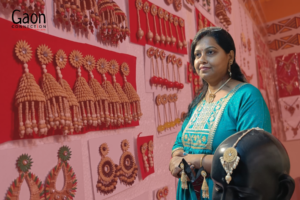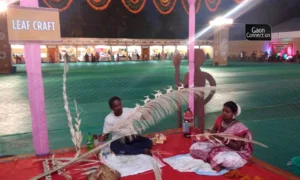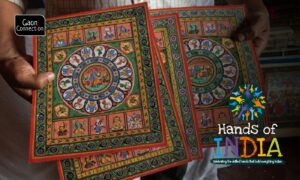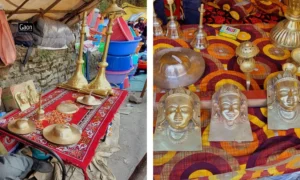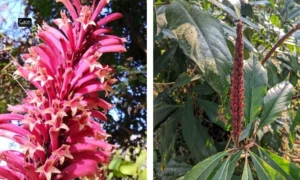There are at least three villages in Bihar, in Dighwara block in the district of Saran in Bihar where artisans work furiously to fulfil orders of aalta patra — an indispensable component of the four day Chhath Festival.
Aalta patra or aarta paatr as they are also known are flat and papad-like and made of either gram flour (besan) or refined flour (maida), and then dyed red. These are offered to the Sun God during Chhath celebrations.
Chhath Puja is widely celebrated in Bihar, Jharkhand, border areas in Uttar Pradesh and in Nepal as well. Both Hindus and Muslims make these aalta patra and have been doing so for more than 80 years. Most of them are women.
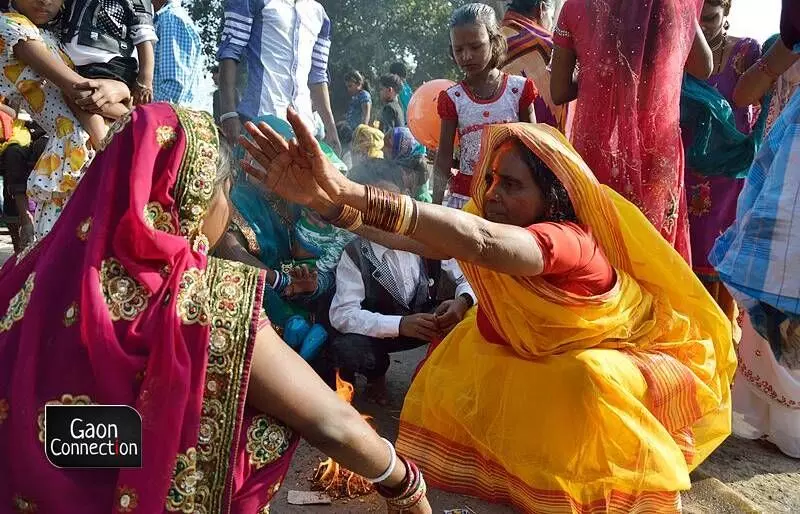
Chhath Puja is widely celebrated in Bihar, Jharkhand, border areas in Uttar Pradesh and in Nepal as well.
How an aalta patra is made
“Making the aalta patra is a laborious process. First acacia pods are broken up and the fibres from it are extracted. After this besan or maida is added to the fibres and then mixed with red colour and water and boiled and finally rolled out into the round shapes you see,” said Bhagwan Das, who has been making them almost all his life.
Also Read: In Photos: From Nahay Khay to arghaya — how people in Bihar and Jharkhand celebrate Chhath Puja
Once the aalta patras are made they are sunned on the terraces, front yards, and even the roads to dry before being bundled into sets of 20-50 and sent to the markets to sell.
The work on making aalta patras begins somewhere in July and carries on till Chhath Puja that follows Diwali. As aalta patras are used in the pujas, the makers exercise the utmost devotion and hygiene while making them.
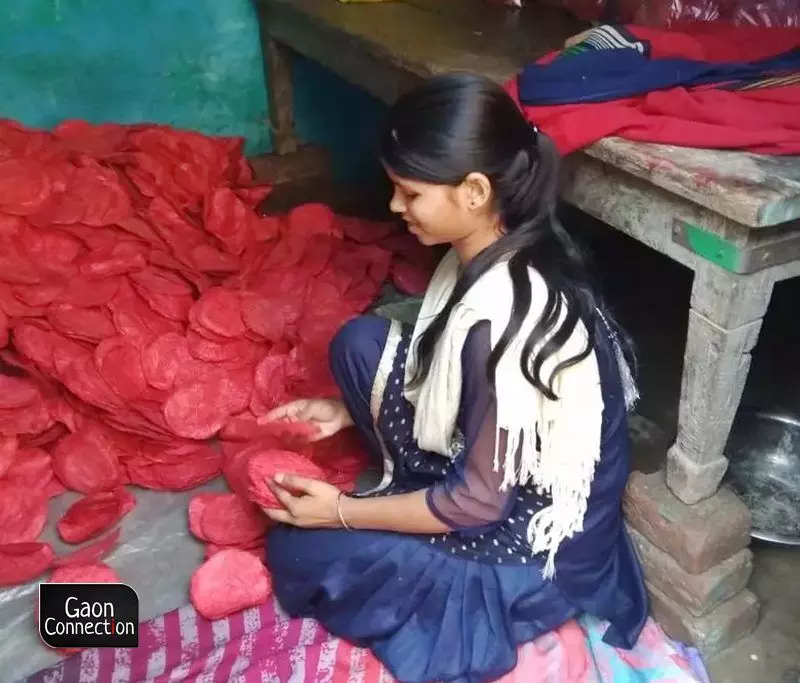
The work on making aalta patras begins somewhere in July and carries on till Chhath Puja that follows Diwali.
“For a bundle of twenty aalta patra we earn twenty rupees. The bundle is sold in the market for forty rupees,” Rajkumar Das an aalta patra worker, told Gaon Connection.
“Each family spends about ten thousand rupees to buy the fibres of the acacia pods out of which they can make about thousand bundles,” the 45-year-old explained. “In a season a family earns anything up to twenty five thousand rupees,” he added.
“I learnt the work from my grandparents and I continue to do it because I have to feed and clothe my four children,” Nisha Najbun, told Gaon Connection. She lost her husband 11 years ago, the 40-year-old said, and she runs her household with the money she earns making aalta patra.
Bhagwan Das believes that a little help from the government by way of training and branding would go a long way in improving their earnings. “If the authorities enable some loans we can install machines, and work much faster and make more aalta patras and earn better,” he said.
Also Read: On Jur Sital, the Maithili New Year, the chulha maharani gets a break
Rajkumar Das, another aalta maker, told Gaon Connection that if the work they did was given the status of a cottage industry, it would greatly help them.
“If what we do becomes a cottage industry, then getting loans from banks will get easier. We can then buy machines and increase our production two-fold,” Rajkumar Das said.







